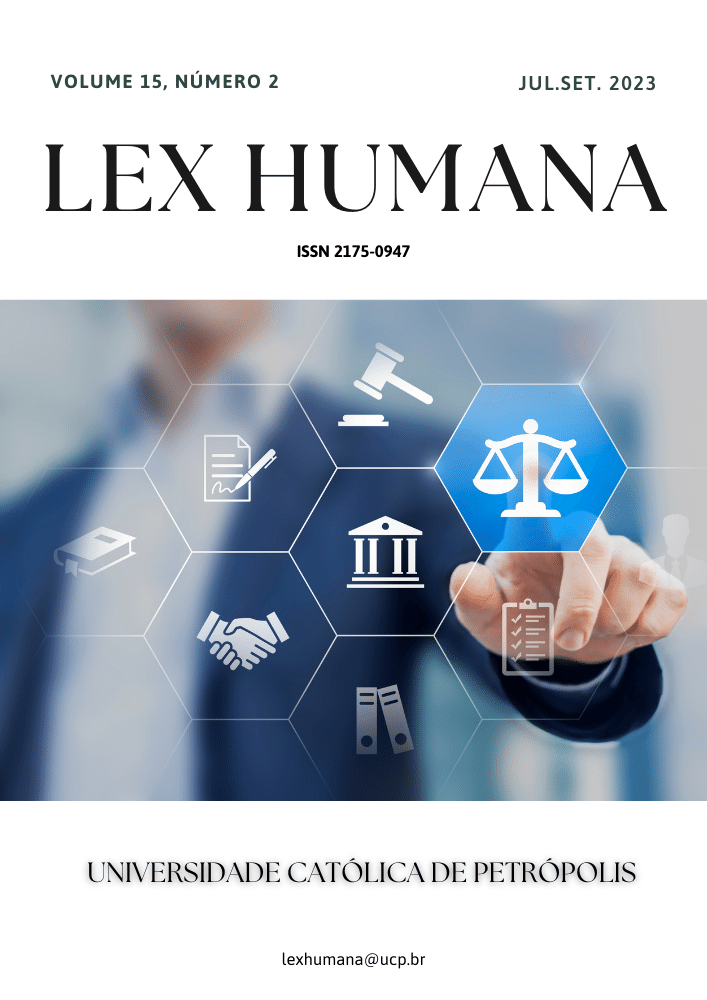Abstract
The military aggression of the Russian Federation against Ukraine in certain areas of Luhansk and Donetsk regions, and the annexation of the Autonomous Republic of Crimea forced thousands of citizens to change their place of residence and move to other regions of the country or beyond its borders. Subsequently, this has created a new subject of social security law – internally displaced persons (IDPs); however, it has also created new problems in the social security sphere, especially regarding employment, housing, and restoration of pension payments, cash assistance and medical care. These issues are a challenge for state bodies and the modern science of social security law. Studying the features of the status of IDPs as a separate subject of social security law, the specifics of its legal regulation is a necessary part of the general system of social protection of internally displaced persons. Identifying problems and emerging effective mechanisms for overcoming them are crucial for developing modern science, the state and society. The purpose of the academic paper is to characterize the most significant problems related to internally displaced persons’ rights in the context of the challenges of the modern social-political situation, as well as to outline the primary prerequisites, factors and ways to solve the problems of this category of persons in current conditions. In the course of the research, analytical and bibliographic methods were used to study the scientific literature on the issues of establishing internally displaced persons’ rights. At the same time, induction, deduction, analysis, synthesis of information, system-structural, comparative, logical-linguistic methods, abstraction, and idealization were applied to study and process data. By the way, the research authors conducted the survey in online mode to practically clarify the most significant issues related to the rights of internally displaced persons. Based on the research results, the primary and most significant theoretical aspects of problematic issues related to establishing and implementing the rights of internally displaced persons were determined. At the same time, the standpoints of scientists, employees of local self-government bodies and specialists of migration service departments regarding the principal practical aspects of this issue were investigated.
References
Antsupova, T. et al., (2018). Decision in the exemplary case of the suspension of pension to an internally displaced person Case No. 805/402/18. Proceeding No. Pz/9901/20/18. https://www.refworld.org/cases,UKR_SC,5bd1df444.html.
Balinchenko, S. (2021). A dynamic approach to localness in the context of conflict-affected internal displacement and return in Ukraine. SN Social Sciences 1, 52. https://link.springer.com/article/10.1007/s43545-021-00057-1
Bauböck, R. (2018). Refugee protection and burden-sharing in the European Union. Journal of Common Market Studies, 56, 1, 141–156. https://onlinelibrary.wiley.com/doi/10.1111/jcms.12638. https://doi.org/10.1111/jcms.12638
Cantor, D., Swartz, J. & Roberts, B. et al. (2021). Understanding the health needs of internally displaced persons: a scoping review. Journal of Migration and Health, 4, Article 100071, https://www.sciencedirect.com/science/article/pii/S2666623521000386. https://doi.org/10.1016/j.jmh.2021.100071
Ekezie, W., Adaji, E.E. & Murray, R.L. (2020). Essential healthcare services provided to conflict-affected internally displaced populations in low and middle-income countries: A systematic review. Health Promotion Perspectives, 10, 24-37. https://hpp.tbzmed.ac.ir/Article/hpp-31864. https://doi.org/10.15171/hpp.2020.06
Ekezie, W., Siebert, P., Timmons, S., Murray, R.L. & Bains, M. (2022). Exploring the influence of health management processes on health outcomes among internally displaced persons (IDPs). Journal of Migration and Health, 6, 2022, 100124. https://www.sciencedirect.com/science/article/pii/S2666623522000472. https://doi.org/10.1016/j.jmh.2022.100124
Gichunge, C., Mutiso, D. & Brynjarsdottir, J. (2020). Predictors of social support, physical health and mental health among food insecure internally displaced persons in Turkana, Kenya. Conflict and Health, 14, 58. https://conflictandhealth.biomedcentral.com/articles/10.1186/s13031-020-00303-y
Greene-Cramer, B., Summers, A., Lopes-Cardozo, B., Husain, F., Couture, A. & Bilukha, O. (2020). Noncommunicable disease burden among conflict-affected adults in Ukraine: a cross-sectional study of prevalence, risk factors, and effect of conflict on severity of disease and access to care. PLoS ONE, 15, 4, e0231899. https://journals.plos.org/plosone/article?id=10.1371/journal.pone.0231899. https://doi.org/10.1371/journal.pone.0231899 .
Grundy, J. & Biggs, B.A. (2019). The impact of conflict on immunisation coverage in 16 Countries. International Journal of Health Policy and Managment, 8, 4, 211-221. https://www.ncbi.nlm.nih.gov/pmc/articles/PMC6499911/
Haran, O., Yakovlyev, M. & Zolkina, M. (2019). Identity, war, andpeace: public attitudes in the Ukraine-controlled Donbas. Eurasian Geography and Economics, 60, 684–708. https://www.tandfonline.com/doi/abs/10.1080/15387216.2019.1667845?journalCode=rege20/. https://doi.org/10.1080/15387216.2019.1667845
IOM in Ukraine (2019). Monitoring System Report on the Situation of Internally Displaced Persons Round 14. http://iom.org.ua/sites/default/files/nms_round_14_eng_web.pdfNational
Izuakor, C.F. (2022). Trends in forced displacement due to conflict from 2009 to 2021: A decade forecast for effective humanitarian emergency response system in Nigeria. Frontiers in Human Dynamics, 09 December 2022, 4. https://www.frontiersin.org/articles/10.3389/fhumd.2022.1009651/full. https://doi.org/10.3389/fhumd.2022.1009651
Letswa, A.M. & Isyaku, S.S. (2018). Insurgency and internally displaced persons IDPs in Nigeria: a reflection on the causes, implication and way forward. International Journal of Innovative Studies in Sociology and Humanities, 3, 36–48. https://ijissh.org/storage/Volume3/Issue5/IJISSH-030506.pdf
Ojeleke, O., Groot, W. & Pavlova, M. (2022). Care delivery among refugees and internally displaced persons affected by complex emergencies: a systematic review of the literature. Journal of Public Health, 30, 747-762, https://link.springer.com/article/10.1007/s10389-020-01343-7. https://doi.org/10.1007/s10389-020-01343-7.
Pittaway, E. & Bartolomei, L. (2018). Enhancing the protection of women and girls through the global compact on refugees. Forced Migration Review, 57, 77–79. https://ora.ox.ac.uk/objects/uuid:02fa2f95-aaa1-4480-b102-e2924bd0207d/download_file?file_format=application%2Fpdf&safe_filename=pittaway-bartolomei.pdf&type_of_work=Journal+article
Pop-Eleches, G. & Robertson, G.B. (2018). Identity and Political Preferences in Ukraine–Before and After the Euromaidan. Post-Soviet Affairs, 34, 107–118. https://www.tandfonline.com/doi/10.1080/1060586X.2018.1452181. https://doi.org/10.1080/1060586X.2018.1452181
Roberts, B., Ekezie, W. & Jobanputra, K. et al. (2022). Analysis of health overseas development aid for internally displaced persons in low- and middle-income countries. Journal of Migration and Health, 5, 100090. https://www.sciencedirect.com/science/article/pii/S2666623522000137. https://doi.org/10.1016/j.jmh.2022.100090.
Sabates-Wheeler, R. (2019). Mapping differential vulnerabilities and rights: ‘opening’ access to social protection for forcibly displaced populations. Comparative Migration Studies, 7, 38. https://comparativemigrationstudies.springeropen.com/articles/10.1186/s40878-019-0142-6. https://doi.org/10.1186/s40878-019-0142-6
Sasse, G. & Lackner, A. (2018). War and Identity: The Case of the Donbas in Ukraine. Post-Soviet Affairs, 34, 139–157. https://www.tandfonline.com/doi/10.1080/1060586X.2018.1452209. https://doi.org/10.1080/1060586X.2018.1452209.
Schaffer, A.L., Dobbins, T.A. & Pearson, S.A. (2021). Interrupted time series analysis using autoregressive integrated moving average (ARIMA) models: a guide for evaluating large-scale health interventions. BMC Med. Res. Methodol. 21, 1–12. https://bmcmedresmethodol.biomedcentral.com/articles/10.1186/s12874-021-01235-8. https://doi.org/10.1186/s12874-021-01235-8
Stebelsky, I. (2018). A Tale of Two Regions: Geopolitics, Identities, Narratives, and Conflict in Kharkiv and the Donbas. Eurasian Geography and Economics 59, 28–50. https://www.tandfonline.com/doi/10.1080/15387216.2018.1428904. https://doi.org/10.1080/15387216.2018.1428904.

This work is licensed under a Creative Commons Attribution-NonCommercial-NoDerivatives 4.0 International License.
Copyright (c) 2023 Lex Humana (ISSN 2175-0947)

